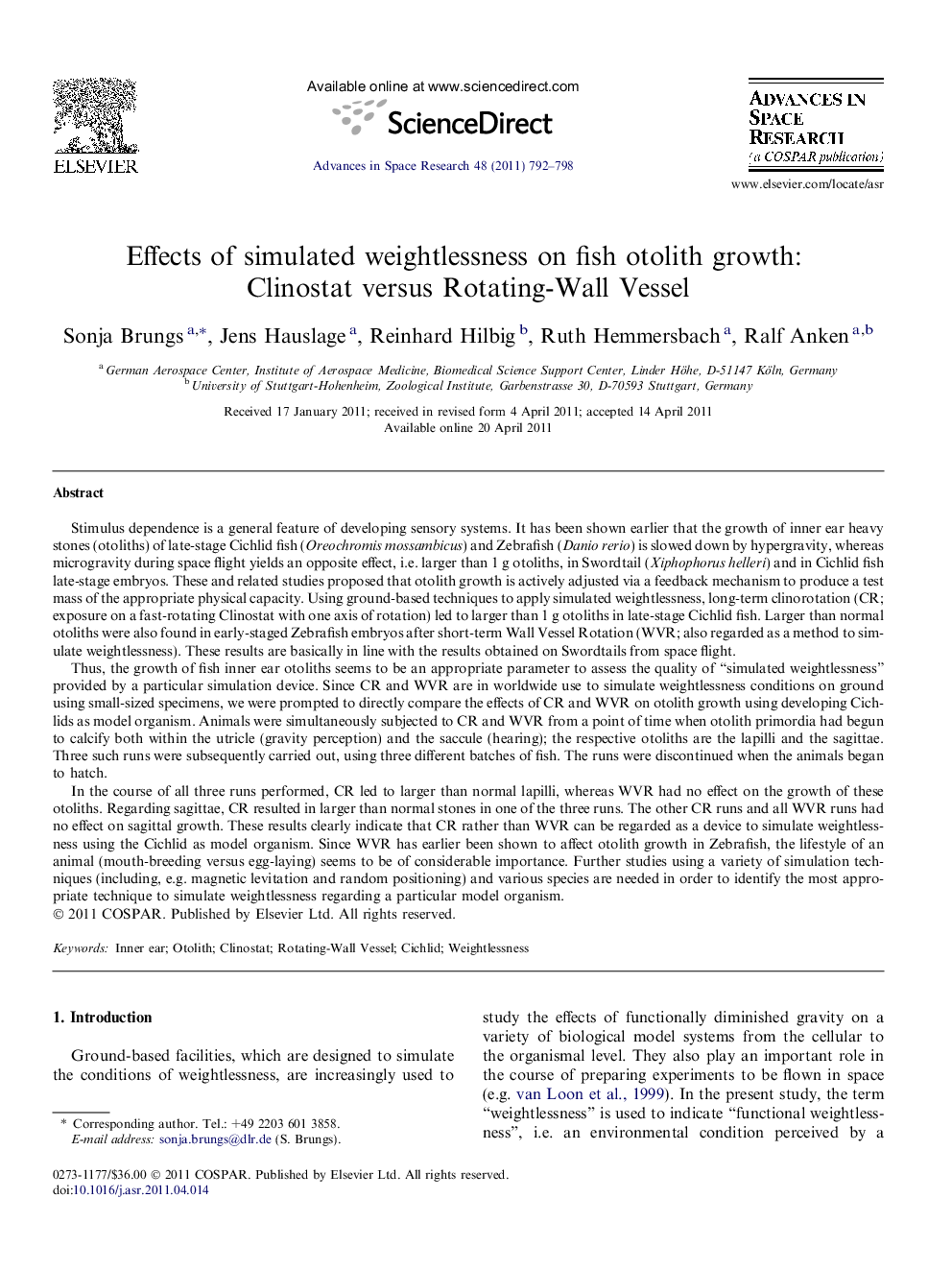| کد مقاله | کد نشریه | سال انتشار | مقاله انگلیسی | نسخه تمام متن |
|---|---|---|---|---|
| 1766317 | 1020145 | 2011 | 7 صفحه PDF | دانلود رایگان |

Stimulus dependence is a general feature of developing sensory systems. It has been shown earlier that the growth of inner ear heavy stones (otoliths) of late-stage Cichlid fish (Oreochromis mossambicus) and Zebrafish (Danio rerio) is slowed down by hypergravity, whereas microgravity during space flight yields an opposite effect, i.e. larger than 1 g otoliths, in Swordtail (Xiphophorus helleri) and in Cichlid fish late-stage embryos. These and related studies proposed that otolith growth is actively adjusted via a feedback mechanism to produce a test mass of the appropriate physical capacity. Using ground-based techniques to apply simulated weightlessness, long-term clinorotation (CR; exposure on a fast-rotating Clinostat with one axis of rotation) led to larger than 1 g otoliths in late-stage Cichlid fish. Larger than normal otoliths were also found in early-staged Zebrafish embryos after short-term Wall Vessel Rotation (WVR; also regarded as a method to simulate weightlessness). These results are basically in line with the results obtained on Swordtails from space flight.Thus, the growth of fish inner ear otoliths seems to be an appropriate parameter to assess the quality of “simulated weightlessness” provided by a particular simulation device. Since CR and WVR are in worldwide use to simulate weightlessness conditions on ground using small-sized specimens, we were prompted to directly compare the effects of CR and WVR on otolith growth using developing Cichlids as model organism. Animals were simultaneously subjected to CR and WVR from a point of time when otolith primordia had begun to calcify both within the utricle (gravity perception) and the saccule (hearing); the respective otoliths are the lapilli and the sagittae. Three such runs were subsequently carried out, using three different batches of fish. The runs were discontinued when the animals began to hatch.In the course of all three runs performed, CR led to larger than normal lapilli, whereas WVR had no effect on the growth of these otoliths. Regarding sagittae, CR resulted in larger than normal stones in one of the three runs. The other CR runs and all WVR runs had no effect on sagittal growth. These results clearly indicate that CR rather than WVR can be regarded as a device to simulate weightlessness using the Cichlid as model organism. Since WVR has earlier been shown to affect otolith growth in Zebrafish, the lifestyle of an animal (mouth-breeding versus egg-laying) seems to be of considerable importance. Further studies using a variety of simulation techniques (including, e.g. magnetic levitation and random positioning) and various species are needed in order to identify the most appropriate technique to simulate weightlessness regarding a particular model organism.
Journal: Advances in Space Research - Volume 48, Issue 5, 1 September 2011, Pages 792–798